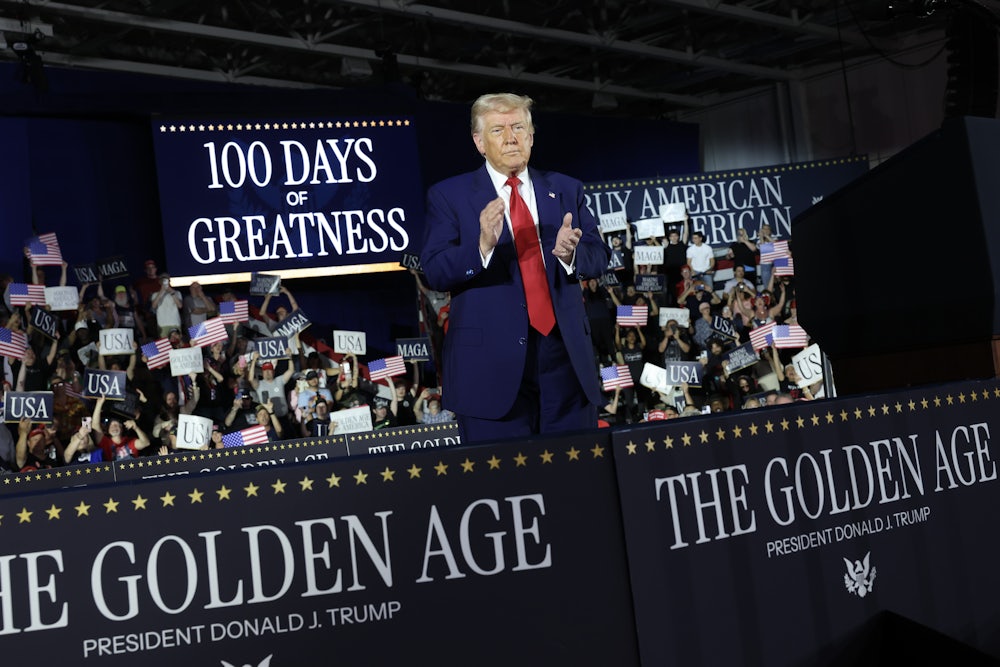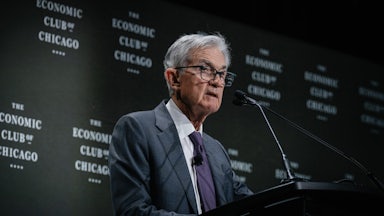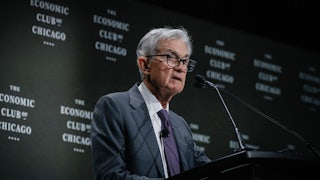I have a friend named Eric Redman. He’s a lawyer, climate change professional, and author (The Dance of Legislation, Bones of Hilo, Death in Hilo). Ric (his friends call him Ric) and his wife have a view out their window of Elliot Bay and the Seattle waterfront. Ordinarily, when they look out their window they see what Ric might call the Dance of Commerce—lots of colorful container ships docked at the fifth-busiest port in the United States (after Los Angeles, Long Beach, New York–New Jersey, and Savannah).
Not Tuesday, though. “Suddenly,” Ric emailed me, “the container ships are not here. Almost all of them normally come from China, with outgoing full containers going to Hawai’i and Alaska. Right now, the largest container ship terminal in Seattle has no vessels docked at all, with the exception of one icebreaker preparing to head to Alaska. There is only one container ship unloading on the opposite side of the waterway.”
This is how the recession begins. In Seattle, cargo shipments are down 60 percent. Los Angeles will be next. As recently as November, the Los Angeles Times reported that cargo traffic at the ports of Los Angeles and Long Beach reached record highs. But last week, it quoted the port’s executive director, Gene Seroka, predicting that “in two weeks’ time, arrivals will drop by 35 percent.” The reason, Seroka said, was that “essentially all shipments out of China for major retailers and manufacturers have ceased, and cargo coming out of Southeast Asia locations is much softer than normal.”
The recession will make its way east from Seattle and Los Angeles as trucks and freight trains carry less cargo overland. The port of New York–New Jersey, which is less reliant on China, is doing pretty well for now, which is good because transportation, warehousing, and storage account for more than 17 percent of all jobs in the Garden State. But Lisa Yakomin, head of the Association of Bi-State Motor Carriers, told the Bergen Record, “It’s a wait and see situation for the trucking community.”
Remember Harold Daggett, president of the International Longshoremen’s Association, who refused to endorse Kamala Harris and later gave Trump credit for averting an East Coast port strike when the credit actually belonged to the Biden administration? Trump is now working round the clock to put Daggett’s dockworkers out of a job. I wonder how long before they put Daggett out of a job. The same goes for Teamsters President Sean O’Brien, who also refused to endorse Harris and gave a cringeworthy speech at the Republican National Convention. The largest Teamsters employer, United Parcel Service, announced plans Tuesday to lay off 20,000 workers, citing tariffs as the reason.
If you think the sole benchmark for a healthy economy is a drop in imports, then I guess you can call a major-port ghost town good news, except about 200,000 jobs depend on the port not being a ghost town, and anyway a catastrophic falloff in imports was never going to make American factories bloom overnight, or possibly ever. According to the Business Roundtable, a lobby group for chief executives, one in five jobs in the U.S. is dependent on trade. The Retail Industry Leaders Association puts it more conservatively at one in 10 jobs, but that’s still a lot.
A recession occurs when there are two consecutive quarters of negative growth. The Commerce Department reported Wednesday that gross domestic product shrank 0.3 percent in the first quarter. Ordinarily, one might legitimately question whether a new president should be held responsible for the economy’s performance during his first two and a half months in office. But Trump broadcast his intention to slap tariffs on everything that moves before and after the election, and he just completed a very busy first 100 days.
Also, look at the difference with the last quarter of 2024, when GDP grew 2.4 percent under the president Trump sneeringly calls “Sleepy Joe Biden.” If 2.4 percent growth is sleeping and negative growth is waking, pass me another pillow. The Wall Street Journal’s Harriet Torry states bluntly: “The main driver of the first-quarter contraction was Trump’s trade war.” I agree. When the numbers make this recession official, I fully expect Trump to call this the China Recession. But China isn’t our president. It will be the Trump Recession. Let’s hope he doesn’t turn it into a Trump Depression.










